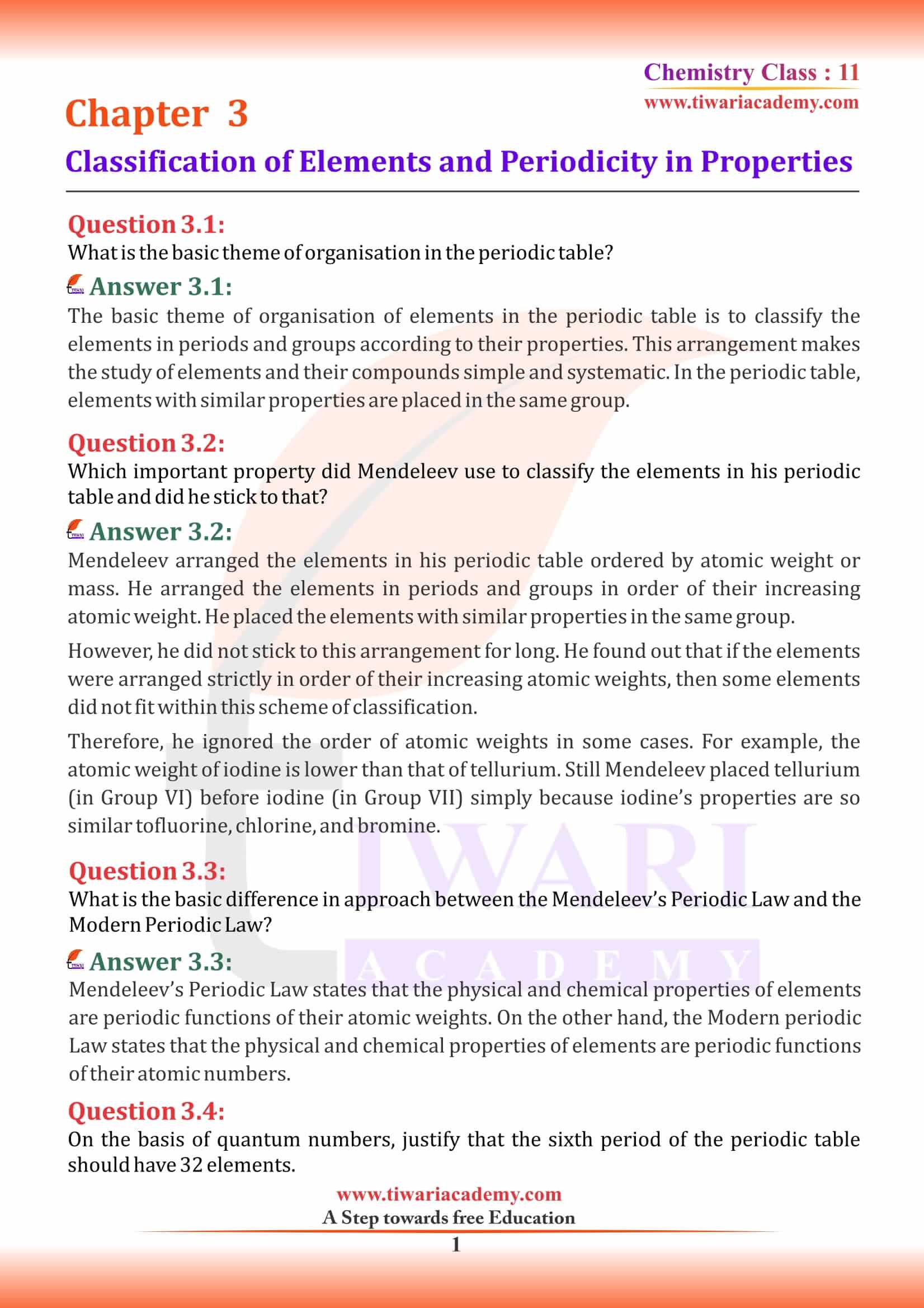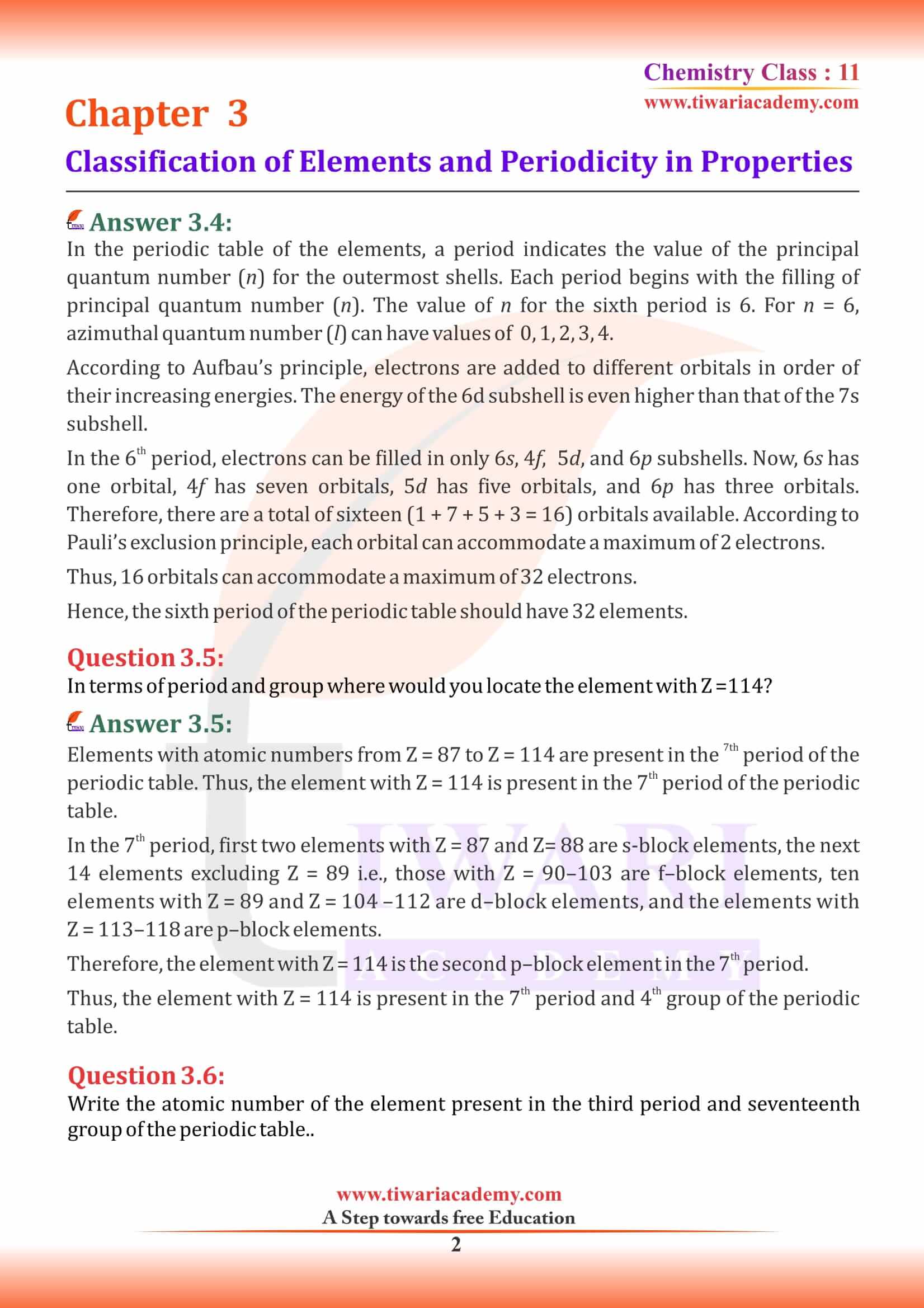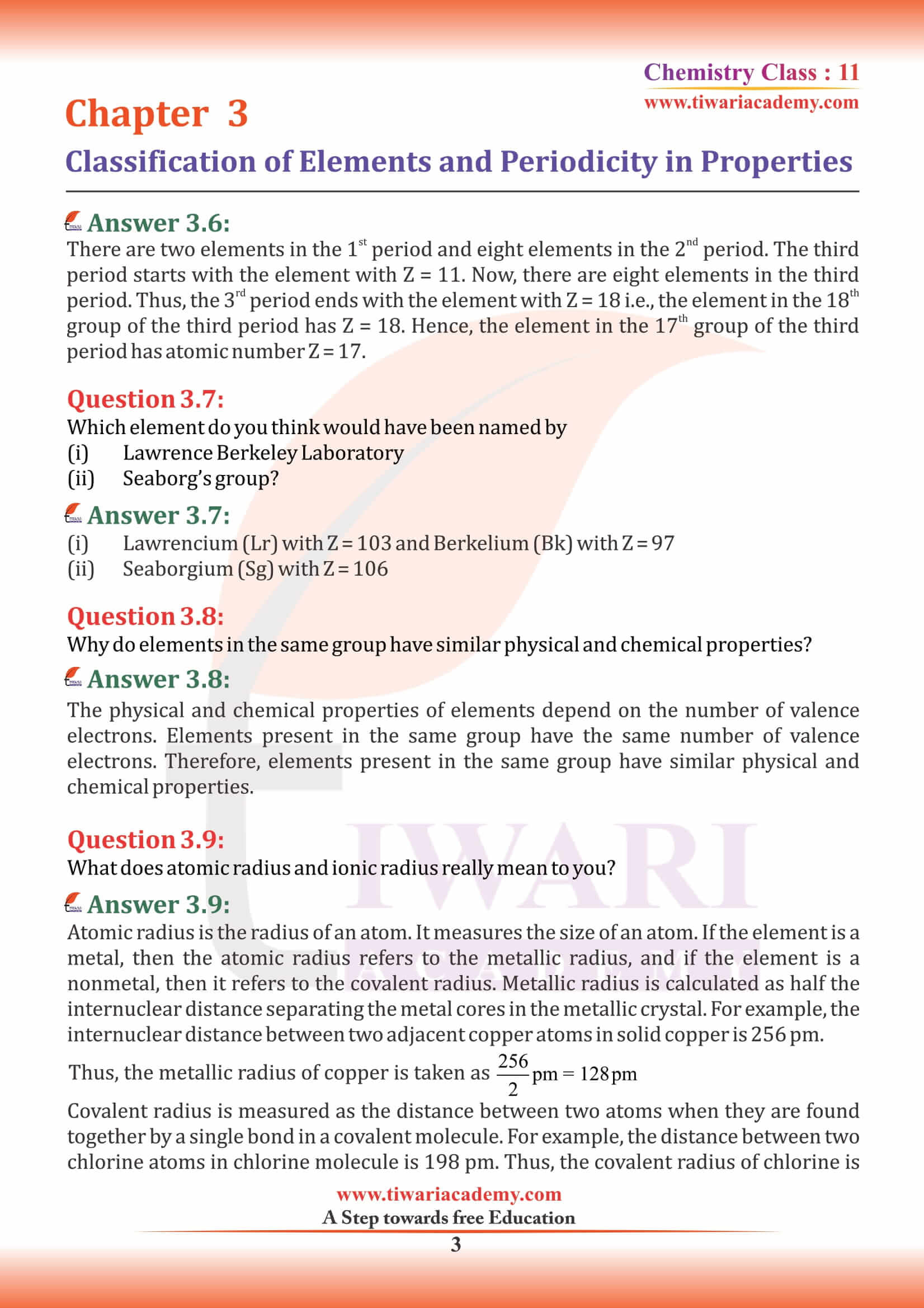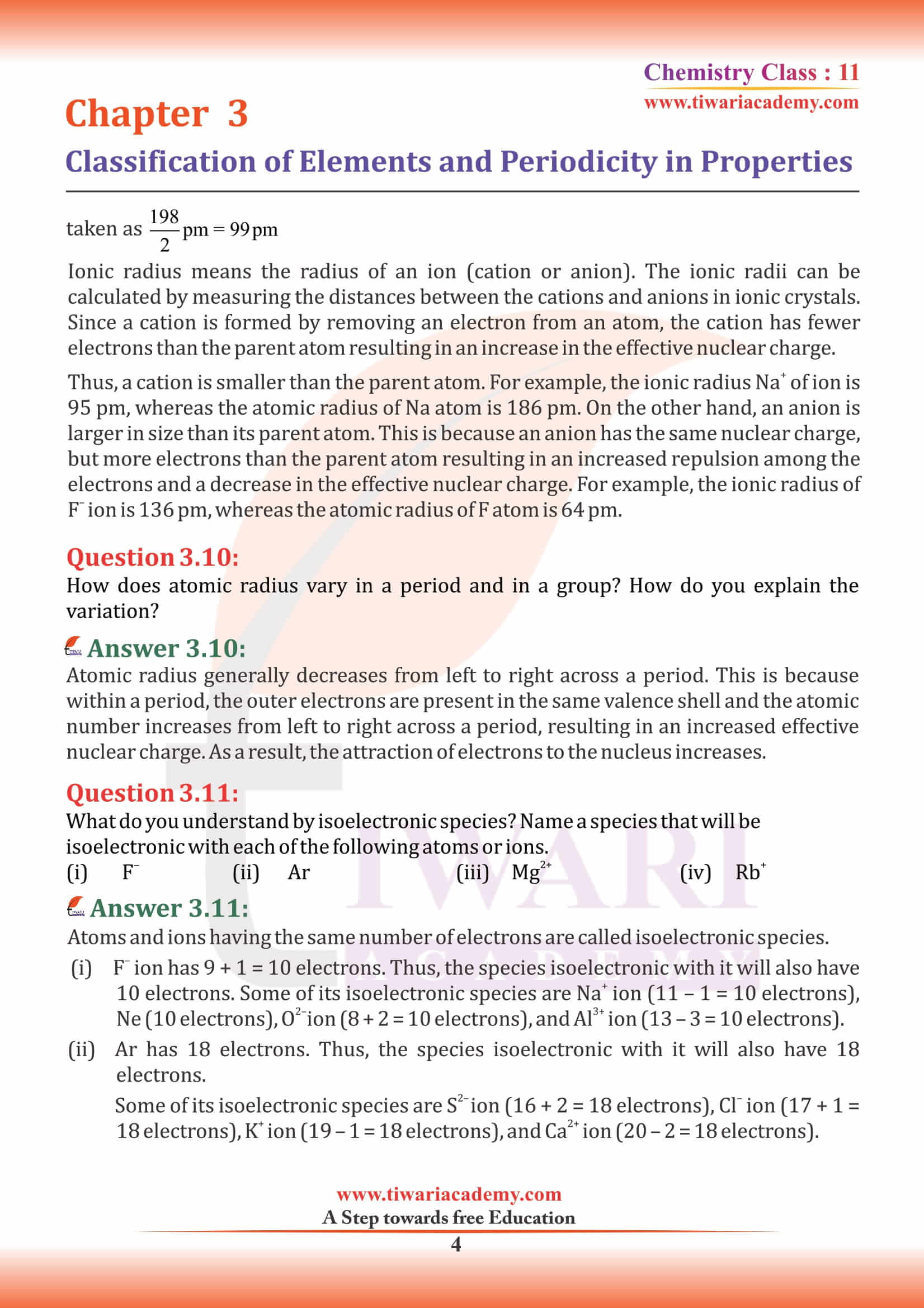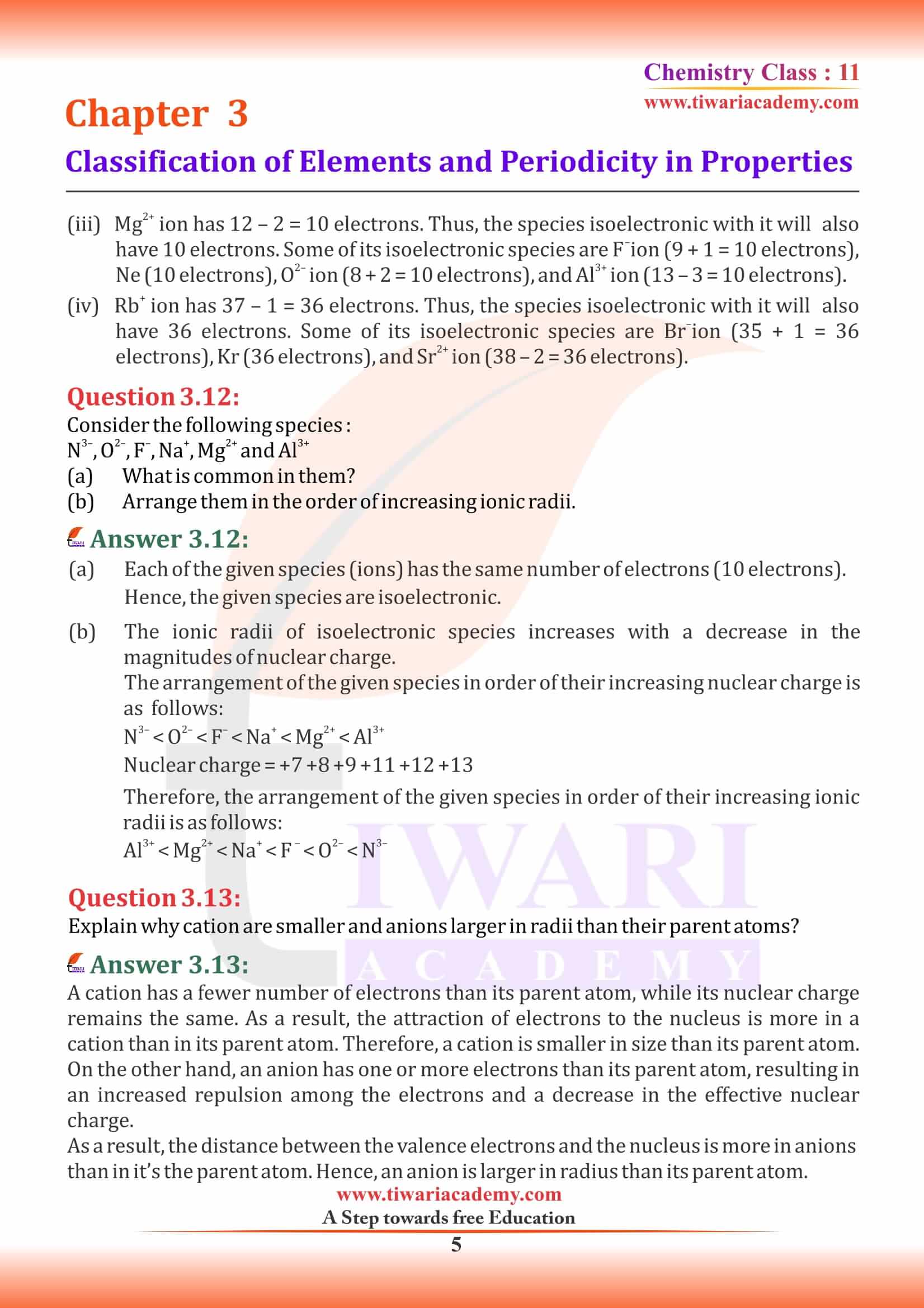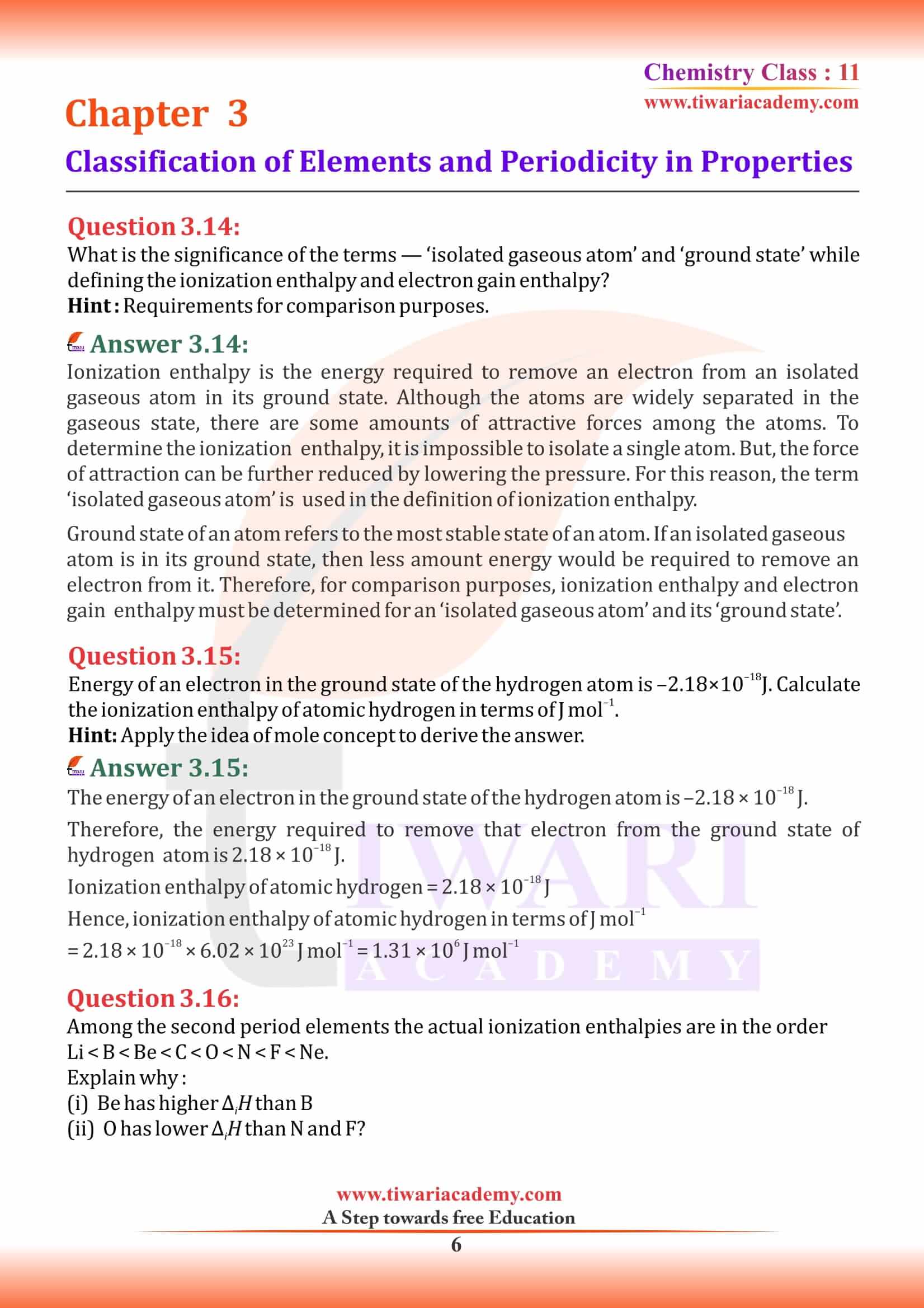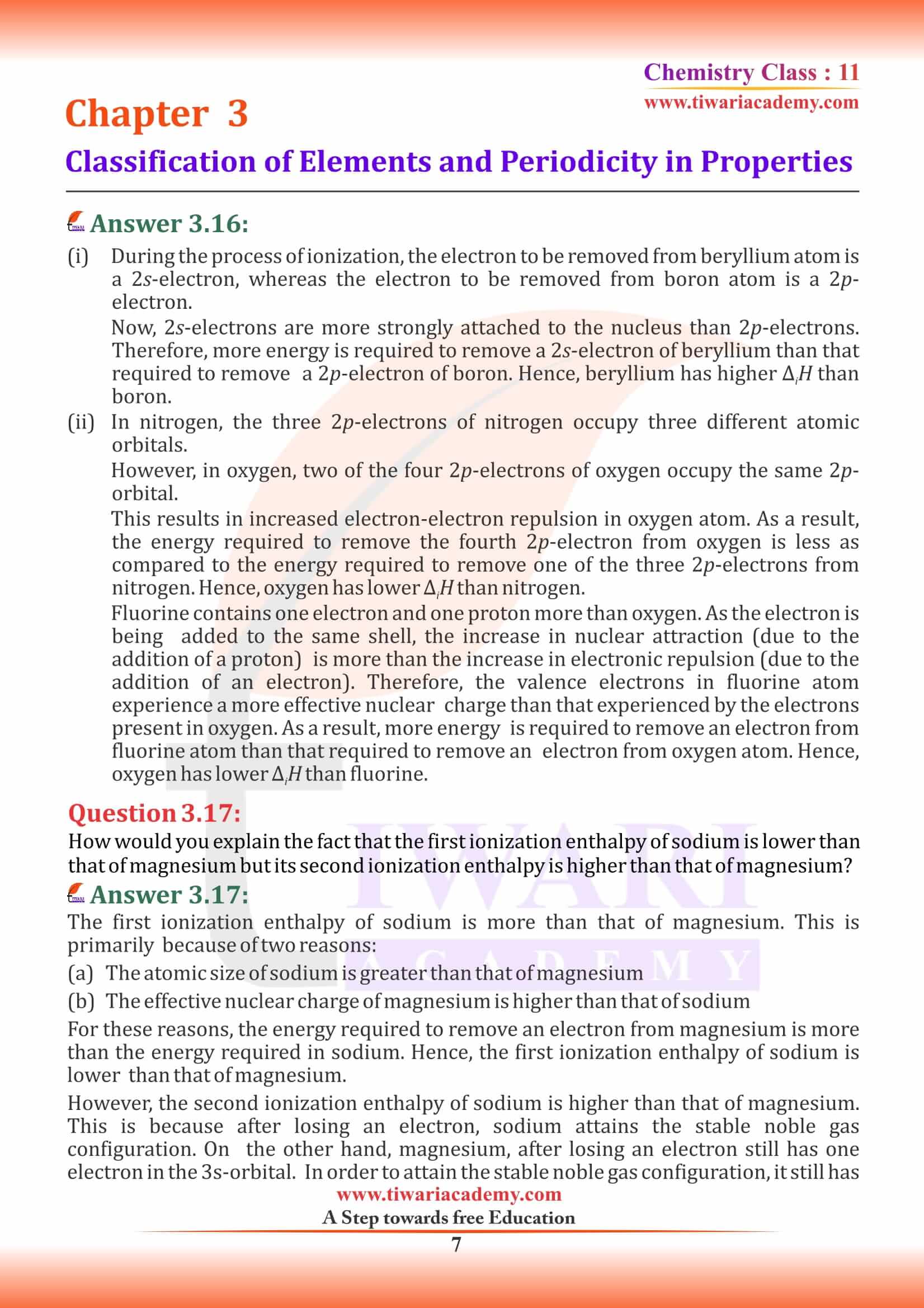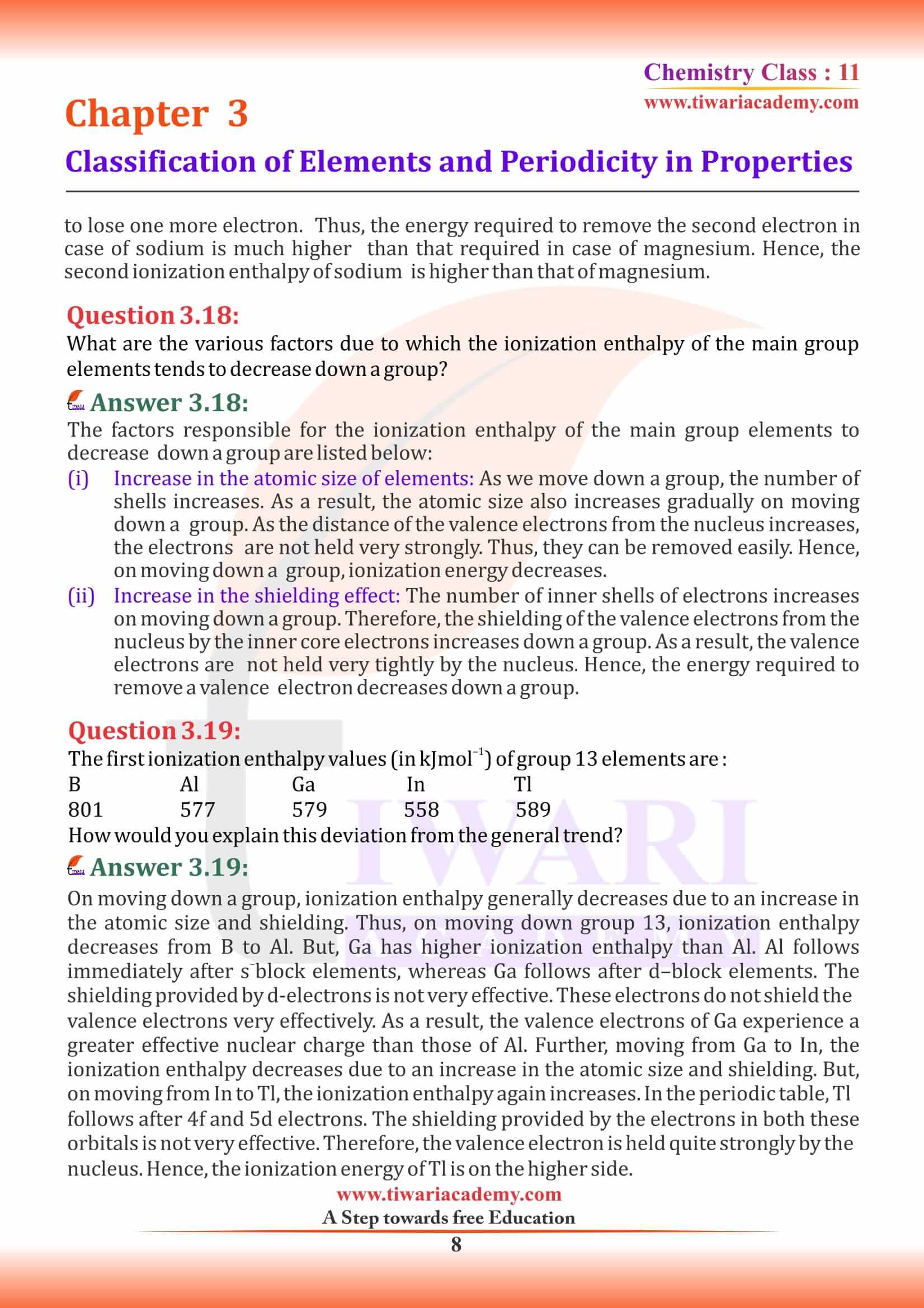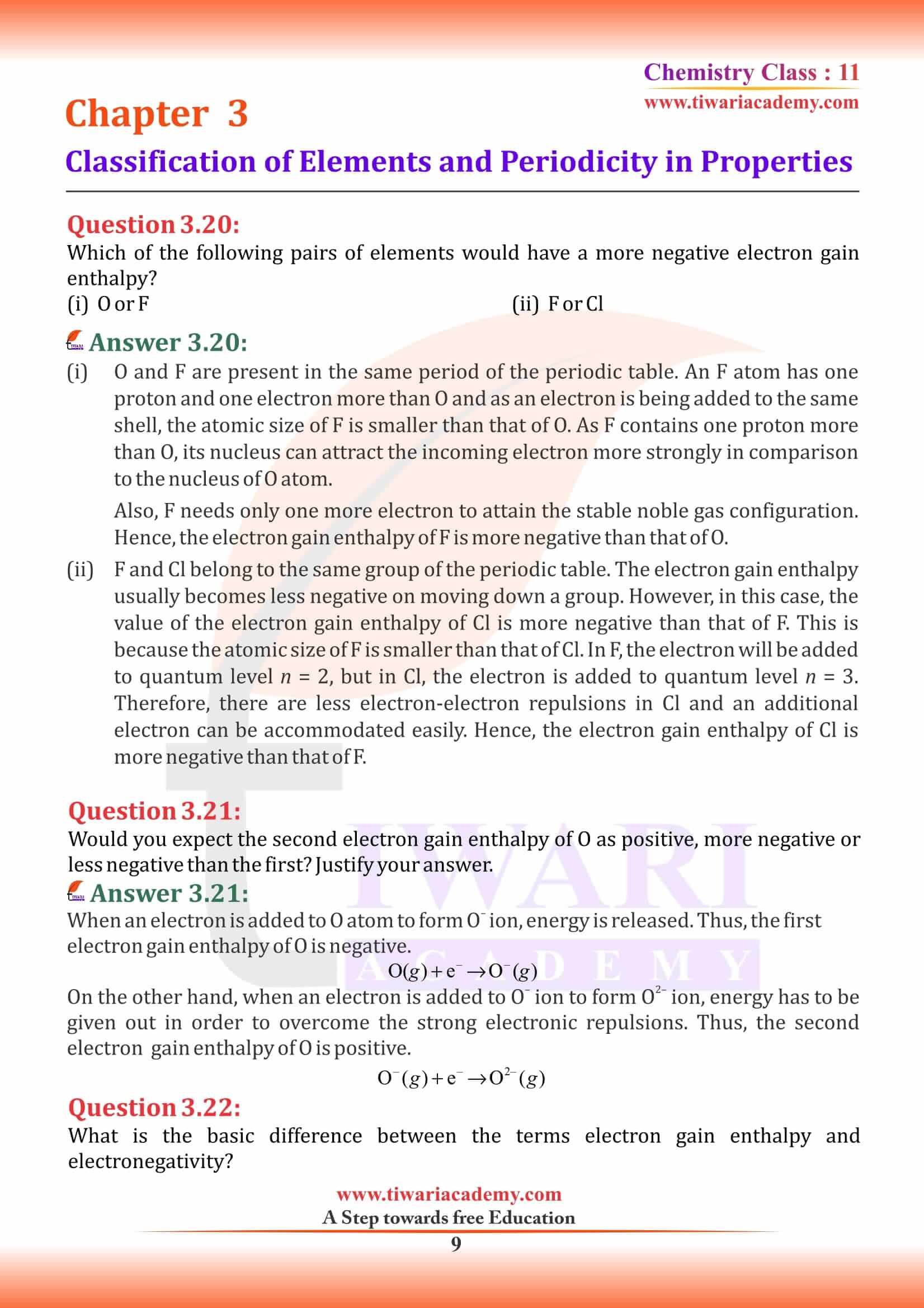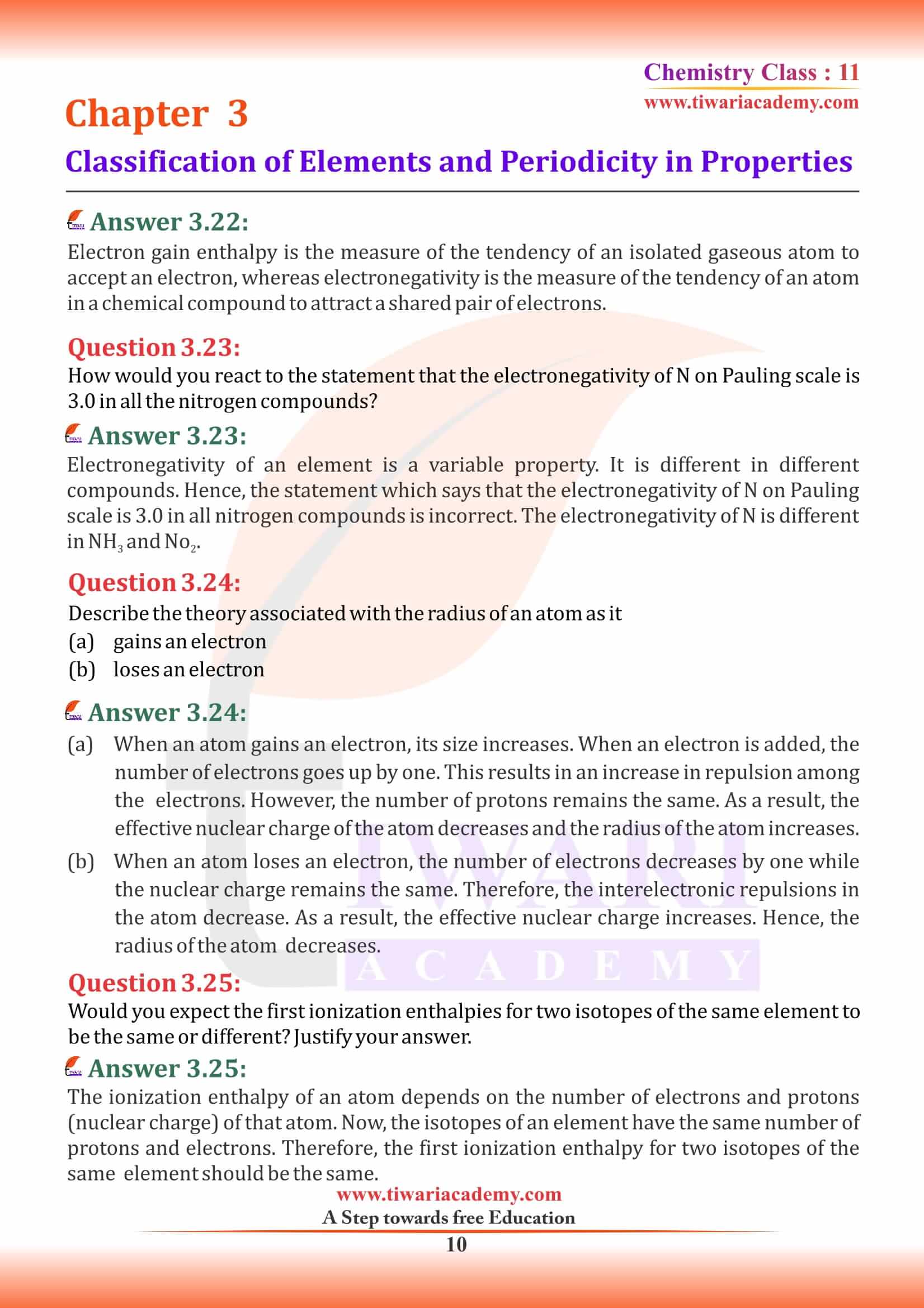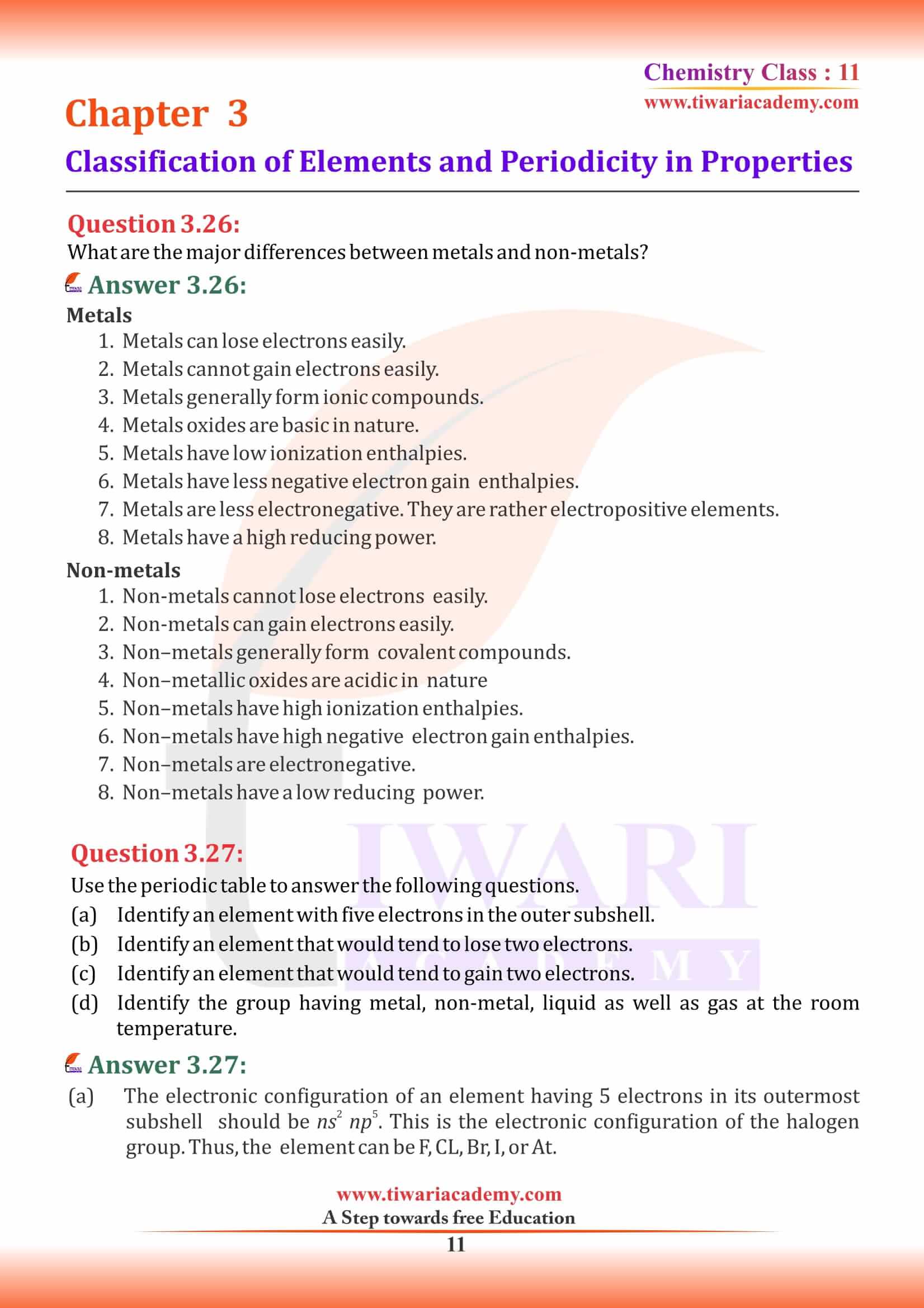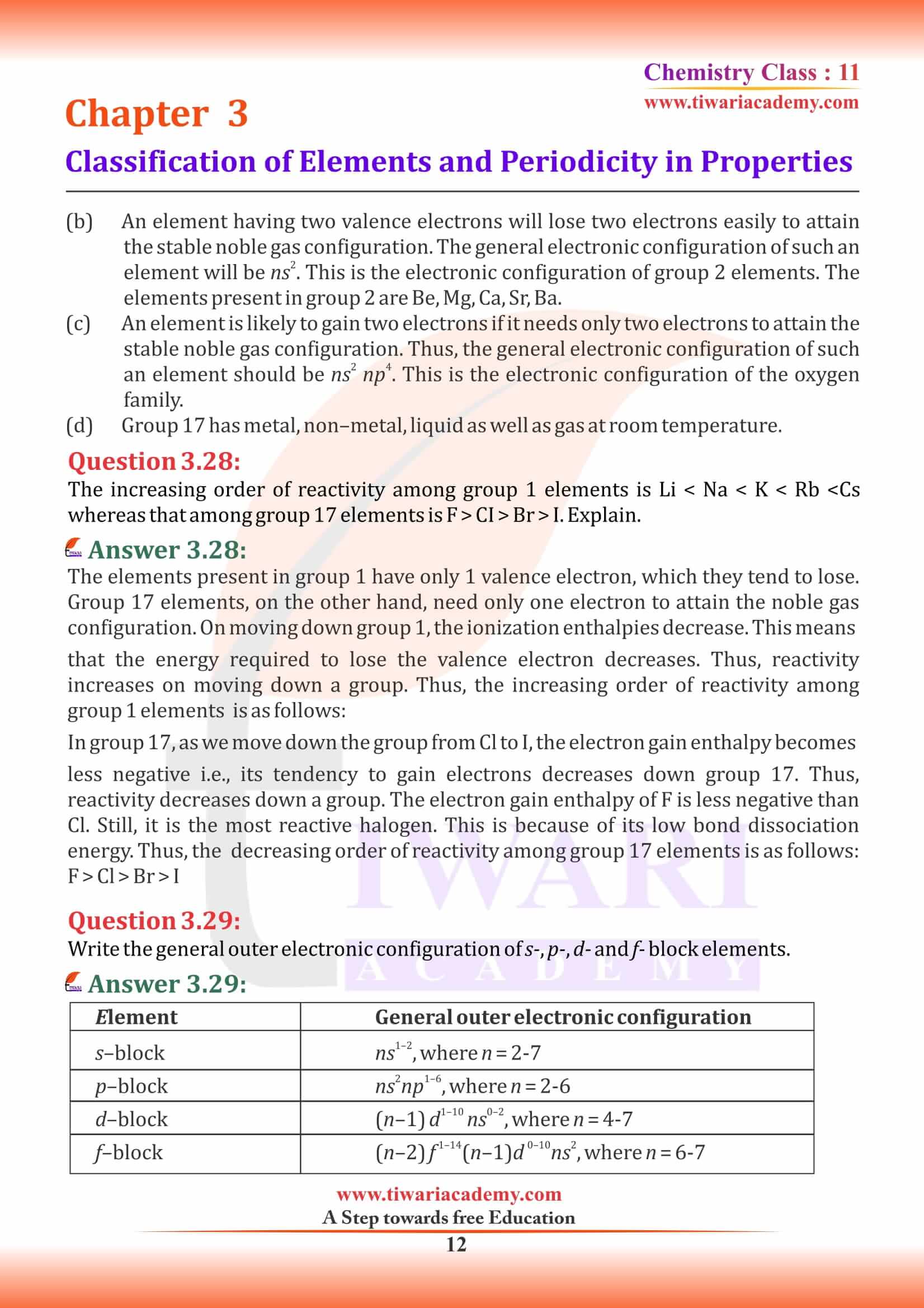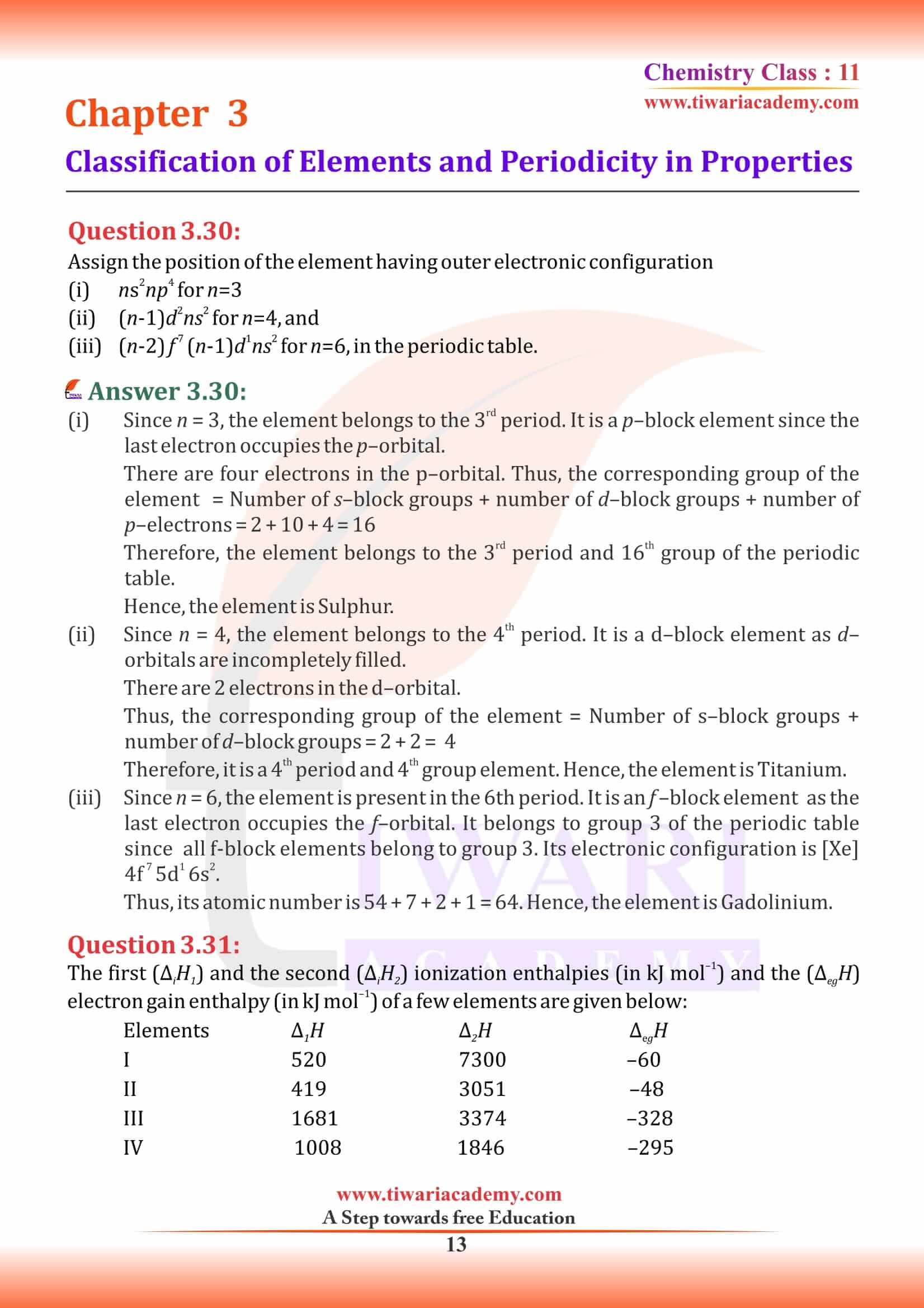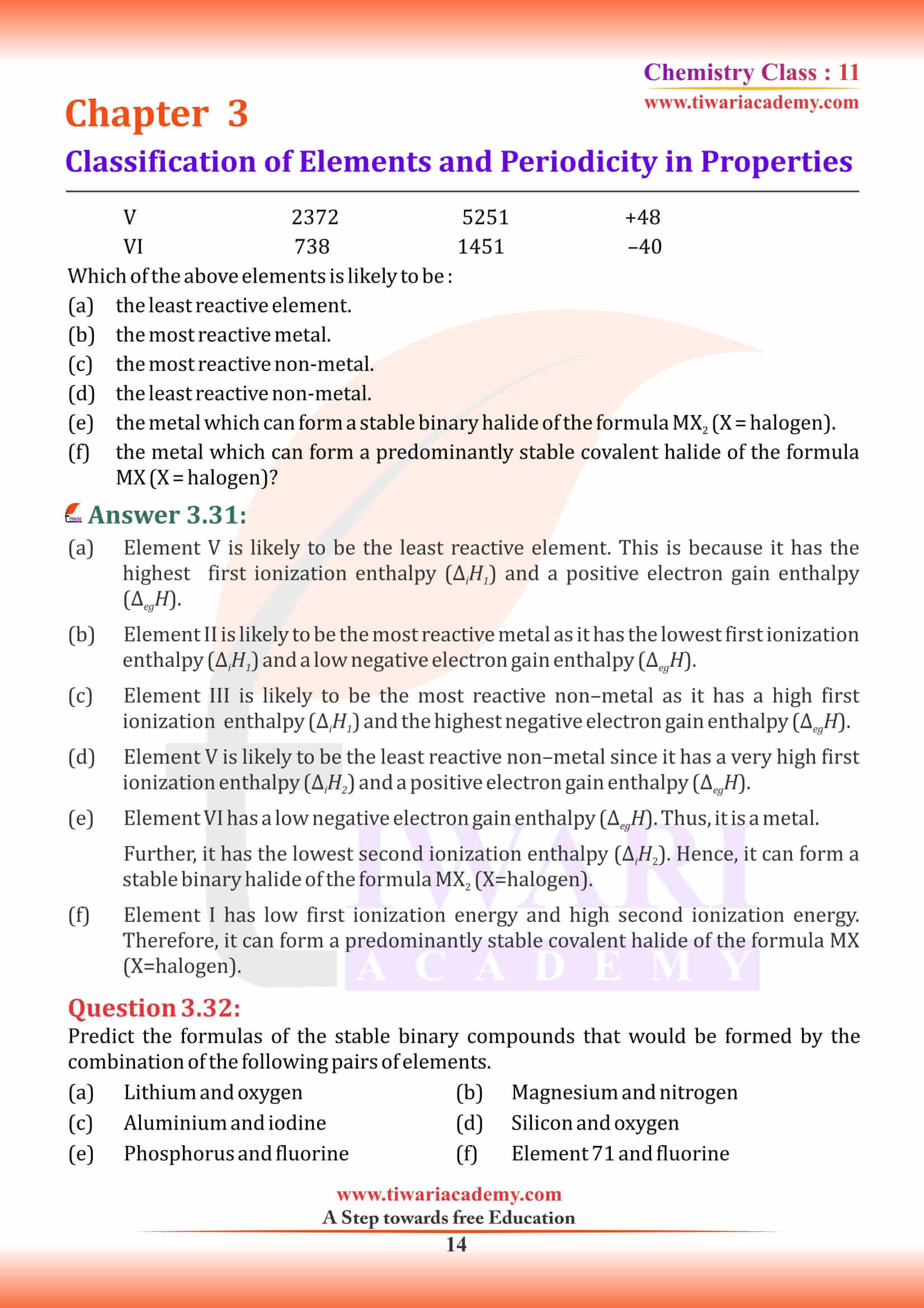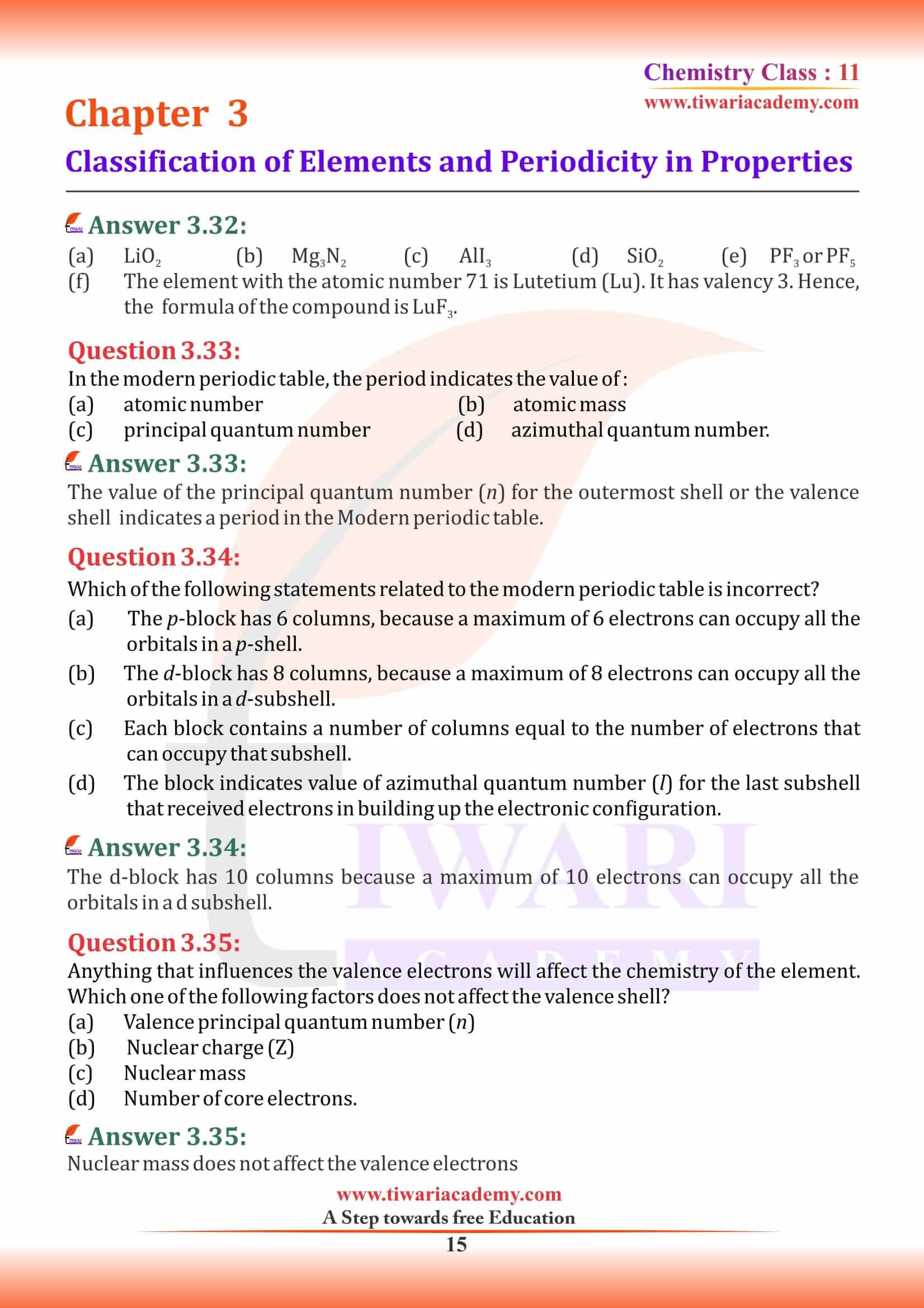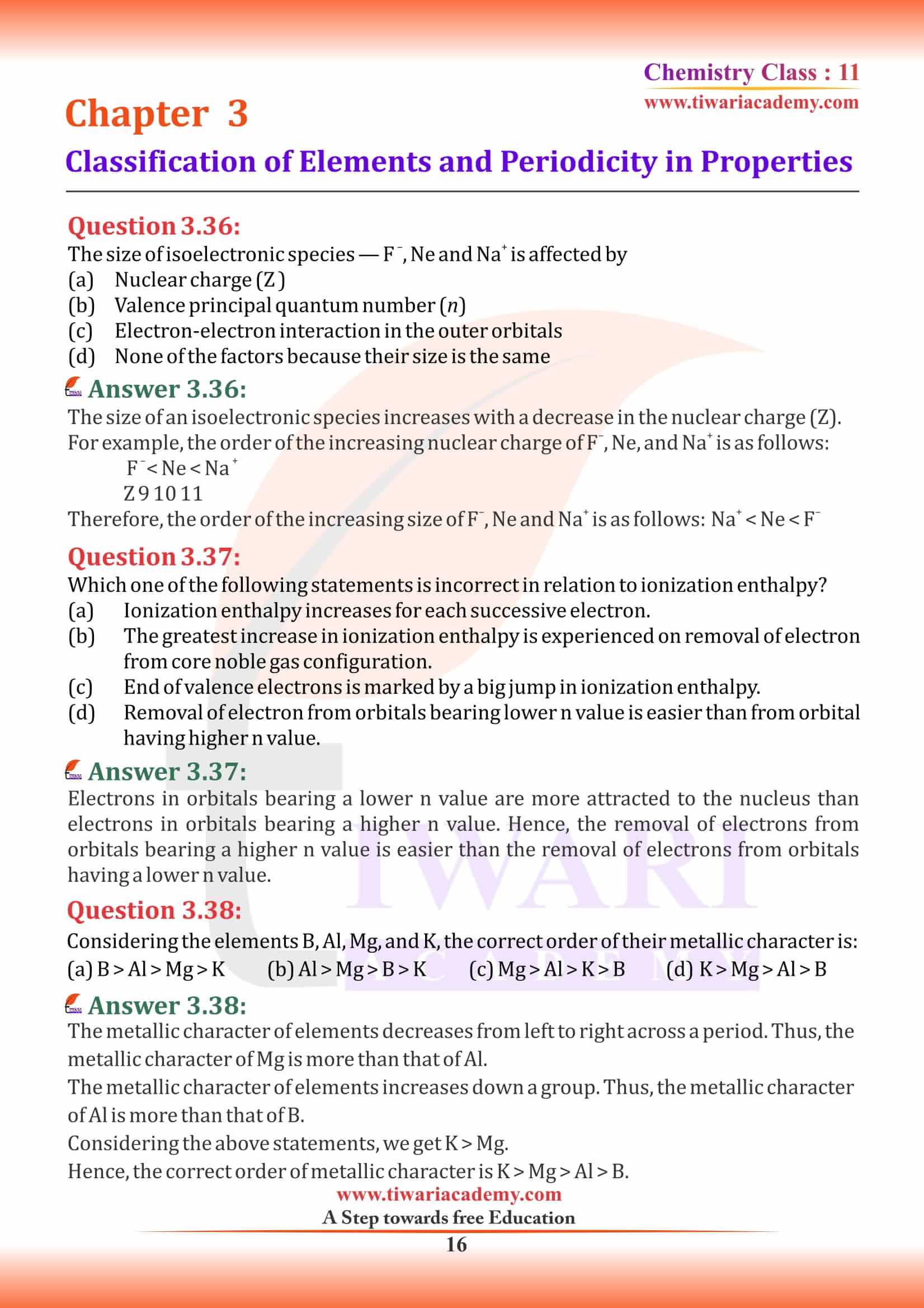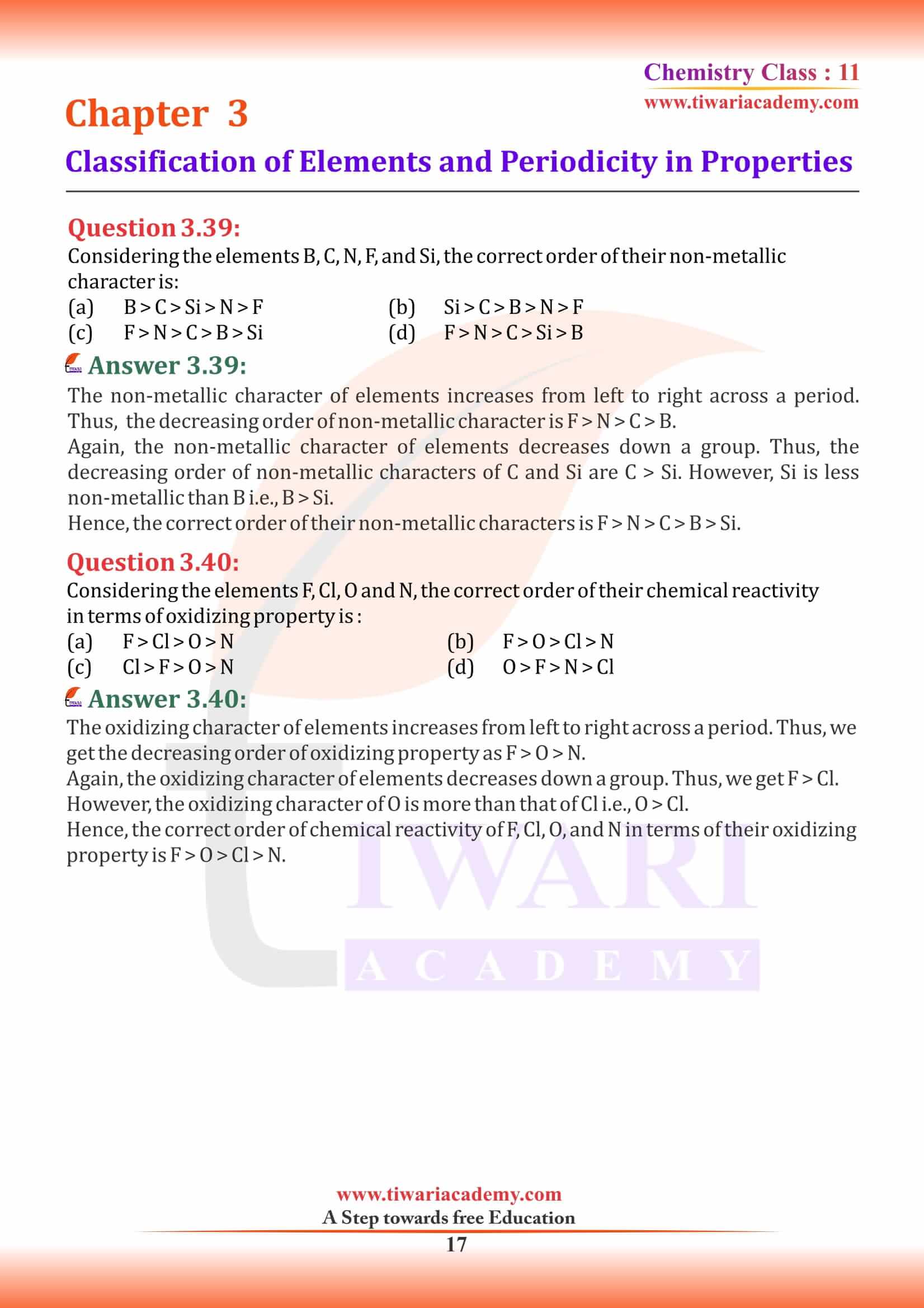NCERT Solutions for Class 11 Chemistry Chapter 3 Classification of Elements and Periodicity in Hindi and English Medium modified and revised for academic year 2024-25. Class 11 Chemistry chapter 3 MCQ, exercise and intext question answers in Properties are updated for new CBSE session 2024-25. All the questions are given in simplified format to make the solutions easy.
NCERT Solutions for Class 11 Chemistry Chapter 3
- Class 11 Chemistry Chapter 3 NCERT Solutions
- Class 11 Chemistry Chapter 3 NCERT Book
- Class 11 Chemistry Chapter 3 Hindi Medium
- Class 11 Chemistry Chapter 3 Revision Book
- Class 11 Chemistry Chapter 3 Study Material 1
- Class 11 Chemistry Chapter 3 Study Material 2
- Class 11 Chemistry Chapter 3 Study Material 3
- Class 11 Chemistry Chapter 3 Assignment 1
- Class 11 Chemistry Chapter 3 Assignment 2
- Class 11 Chemistry Chapter 3 Assignment 3
- Class 11 Chemistry NCERT Solutions
- Class 11 all Subjects NCERT Solutions
Classification of Elements
Classification of elements in groups provides as a fixed pattern in which the element changes their properties periodically. Periodic table made the study of physical and chemical properties of element simple and organized.
Class 11 Chemistry Chapter 3 MCQ
The element with atomic number 35 belongs to
In the modern periodic table, the number of period of the element is the same as
The elements in which electrons are progressively filled in 4f-orbital are called
How many elements are there in 6th period of periodic table?
Periodicity in Properties
The basic law governing modern periodic table states that the properties of elements are periodic functions of their atomic number. These properties reappear at regular intervals or follow a particular trend at regular intervals. This phenomenon is known as the periodicity of elements.
Class 11 Chemistry Chapter 3 MCQ for Exams
From Which Group Does the Element Having Atomic Number 16 Belong?
Which of the following is not an actinoid?
Representative elements are those which belong to
The correct order of electronegativity is
Modern Periodic Law
The modern Periodic law can be stated as: “The physical and chemical properties of the elements are periodic functions of their atomic numbers”. The atomic number is equal to the number of electrons or protons in a neutral atom.
Class 11 Chemistry Chapter 3 Extra Important Questions
Explain why the electron gain enthalpy of fluorine is less negative than that of chlorine.
The added electron in fluorine goes to second quantum level. Due to small size of fluorine it experiences repulsion from other electrons much more in comparison to that in chlorine because in chlorine, the electron is added to 3rd quantum level in which larger space is available for movement.
All transition elements are d-block elements, but all d-block elements are not transition elements. Explain.
All transition metals are d-block elements but all d-block elements are not transition elements because all d- block elements which don’t have completely filled d- orbitals are not counted as transition, So, such elements are exceptional. For example, Zn, CD and Hg.
How does the metallic and non-metallic character vary on moving from left to right in a period?
Metallic character decreases and non-metallic character increases in moving from left to right in a period. It is due to increase in ionisation enthalpy and electron gain enthalpy.
The Present Form of the Periodic Table
The modern or long form of the periodic table is based on the modern periodic law. The table is the arrangement of elements in increasing order of their atomic numbers. The modern periodic table is the present form of the periodic table. And it consists of 18 vertical columns and 7 horizontal rows.
Electronic Configurations of Elements and The Periodic Table
An electron in an atom is characterized by a set of four quantum numbers, and the principal quantum number (n) defines the main energy level known as shell. We have also studied about the filling of electrons into different subshells, also referred to as orbitals (s, p, d, f) in an atom.
The distribution of electrons into orbitals of an atom is called its electronic configuration. An element’s location in the Periodic Table reflects the quantum numbers of the last orbital filled. In this section we will observe a direct connection between the electronic configurations of the elements and the long form of the Periodic Table.
Electronic Configurations
Electronic Configurations and Types of Elements: s-, p-, d-, f- Blocks
Based on the entry of the outer most electron of an element into an orbital, s, p, d and f- blocks are classified. The elements of similar block exhibit similar chemical properties.
Metals, Non-metals and Metalloids
Elements to the left of the line are considered metals. Elements just to the right of the line exhibit properties of both metals and nonmetals and are termed metalloids or semimetals. Elements to the far right of the periodic table are nonmetals.
